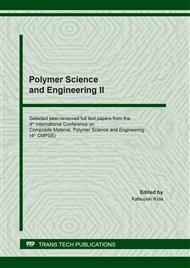p.15
p.23
p.29
p.37
p.43
p.49
p.57
p.67
p.77
Failure Mechanism and Energy Absorption of Foam Filled Hybrid Aluminum-Glass/Epoxy Tubes under Three-Point Bending
Abstract:
Experimental work has been performed on the behaviour of glass/epoxy, aluminum, and aluminum-glass/epoxy empty and polyurethane foam filled tubes subjected to three-point bending. Tubes were of circular and square cross section area. Hand layup method was used to fabricate the tubes. Each tube is made of six layers. Inner diameter and total length of the tubes were 50 mm and 250 mm respectively. Bending load-displacement response, crush force efficiency, and absorbed energy were drawn and discussed. Effect of foam filler, material of the tube and stacking sequence on the maximum bending load was investigated. Energy absorption was determined and discussed. failure mode was investigated. It has been found that the polyurethane foam filler increased the maximum bending load and the energy absorption of the circular and square cross section area tubes. Using hybrid aluminum-glass/ epoxy enhanced the bending load and absorbed energy of the aluminum tubes. Cracks were observed at the upper and lower surfaces at the centre of the glass/epoxy tubes. While the aluminum tubes deformed significantly with either no cracking or with one crack appeared at the centre of the top surface of the tube.
Info:
Periodical:
Pages:
43-48
Citation:
Online since:
June 2021
Authors:
Keywords:
Price:
Сopyright:
© 2021 Trans Tech Publications Ltd. All Rights Reserved
Share:
Citation:


